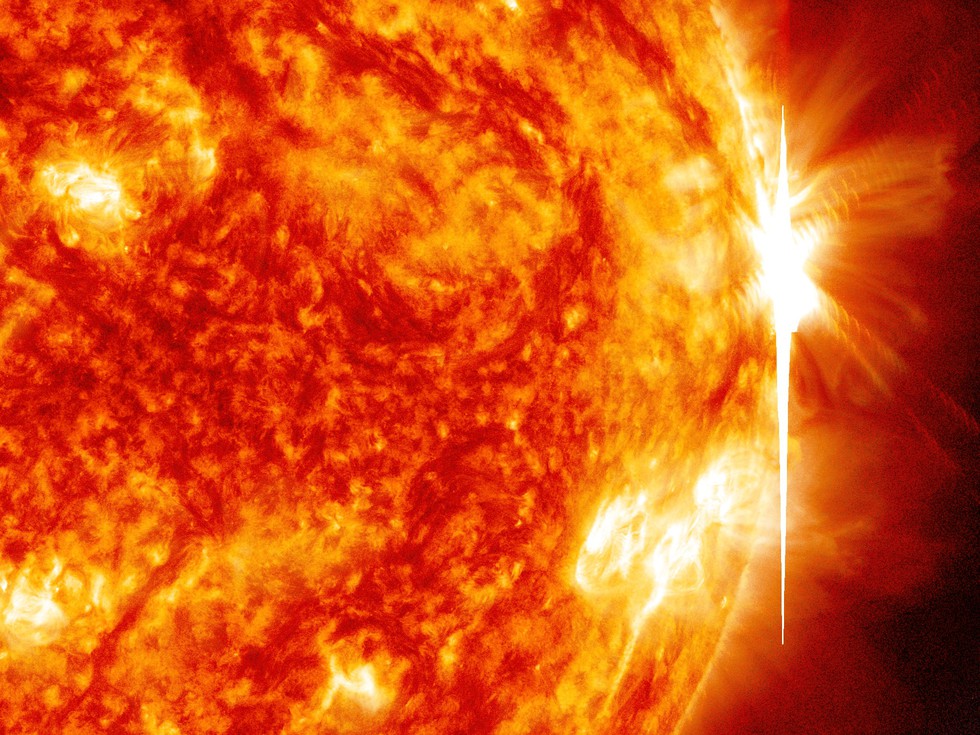What are Solar Flares?
- Solar flares are large explosions that occur at the sun's surface when twisted magnetic field lines suddenly snap, emitting large bursts of electromagnetic radiation. They are seen as bright areas on the sun and they can last from minutes to hours.
- In a matter of just a few minutes, they heat the material to many millions of degrees and produce a burst of radiation across the electromagnetic spectrum, including from radio waves to x-rays and gamma rays.
- Although solar flares can be visible in white light, they are often more readily noticed via their bright X-ray and ultraviolet emissions.
- Effect of Solar Flare on Earth:
- The intense radiation emitted during a solar flare can affect satellite communications, disrupt radio signals and even pose a risk to astronauts in space.
- Additionally, the increased solar radiation can lead to geomagnetic storms, which may impact power grids and cause auroras (northern and southern lights).
About X-Class Solar Flares:
- Flares are classified according to their strength. The smallest ones are B-class, followed by C, M and X, the largest.
- Similar to the Richter scale for earthquakes, each letter represents a ten-fold increase in energy output. Within each letter class, there is a finer scale from 1 to 9.
- So, an X is 10 times an M and 100 times a C.
- C-class flares are too weak to noticeably affect Earth. M-class flares can cause brief radio blackouts at the poles and minor radiation storms that might endanger astronauts.
- The biggest X-class flares are by far the largest explosions in our solar system. X-class flares are most common during solar maximum.
